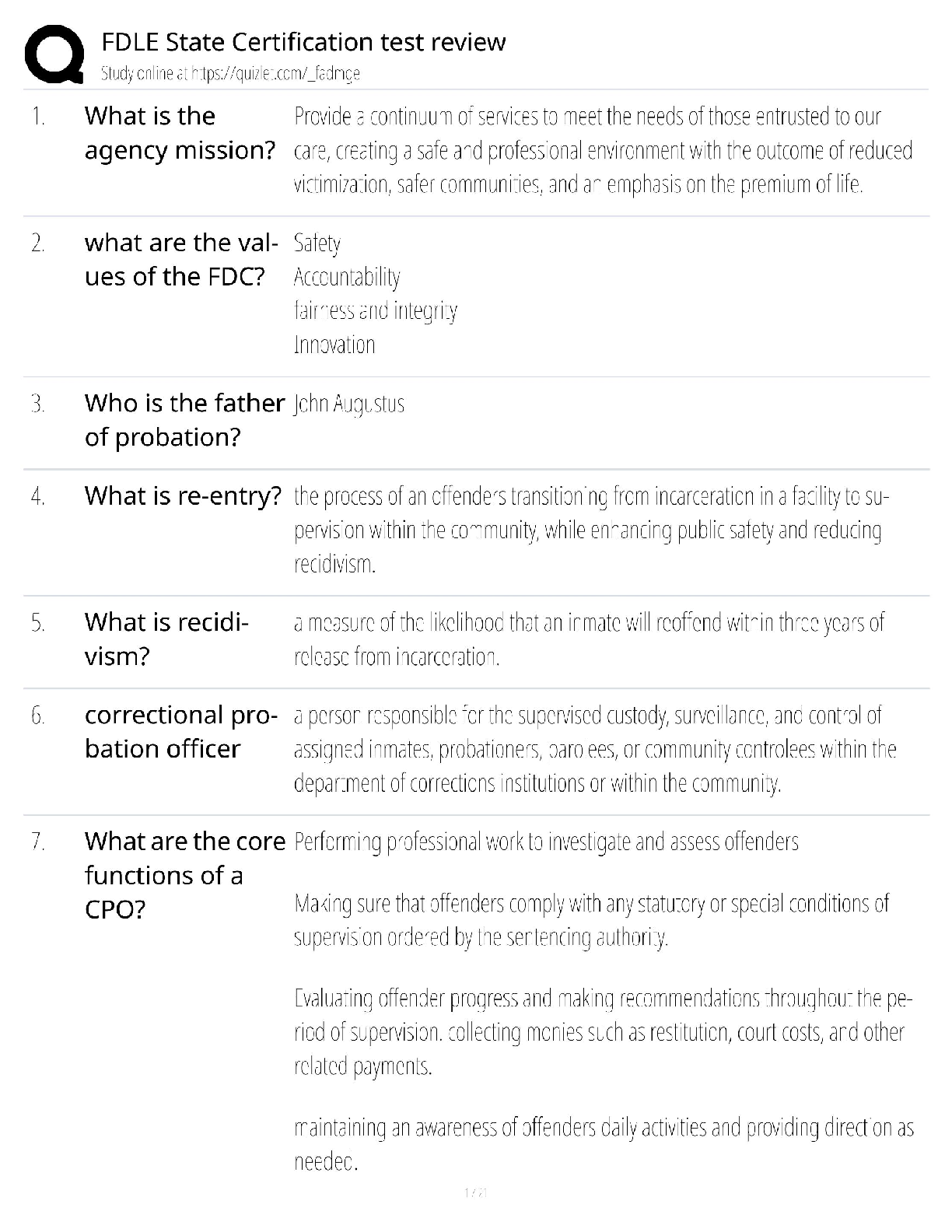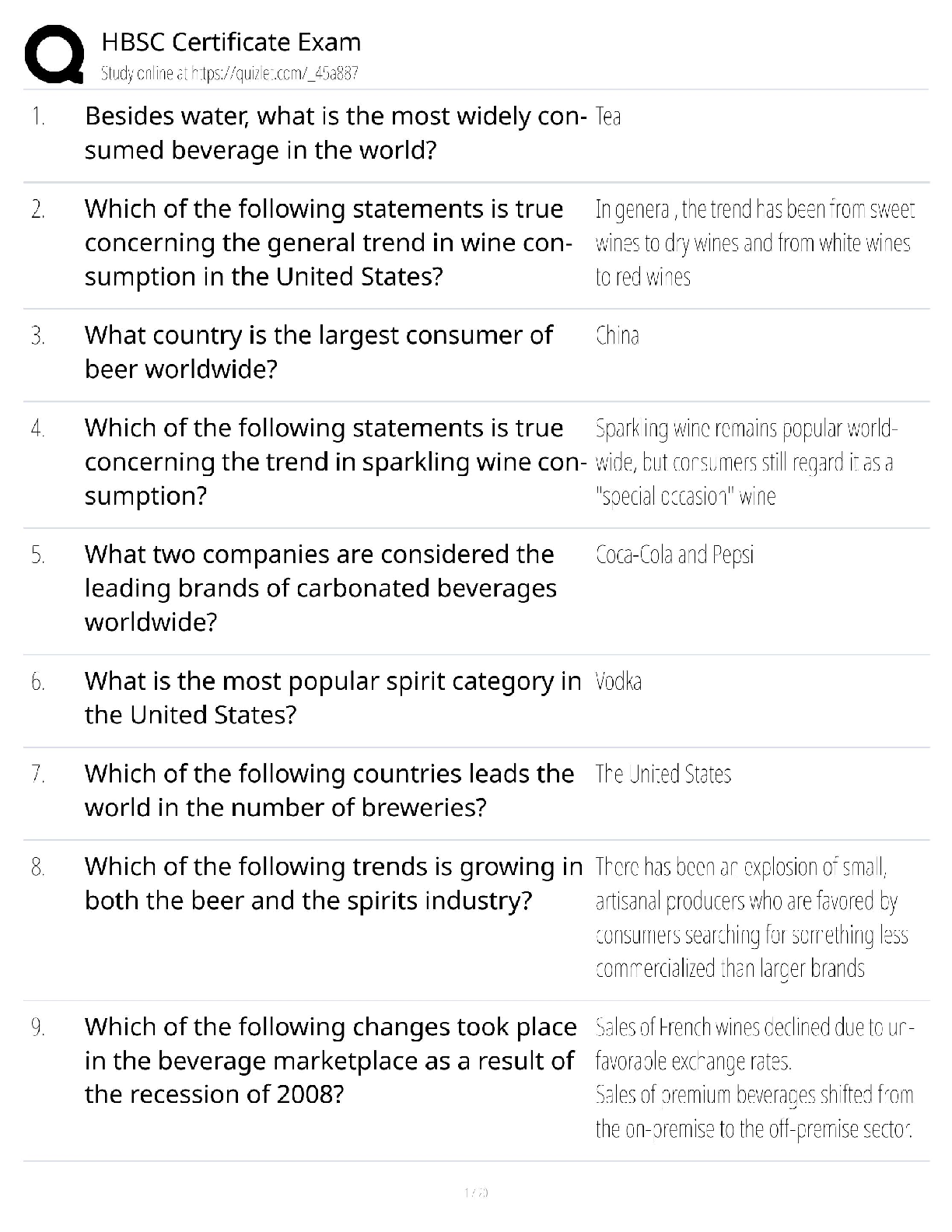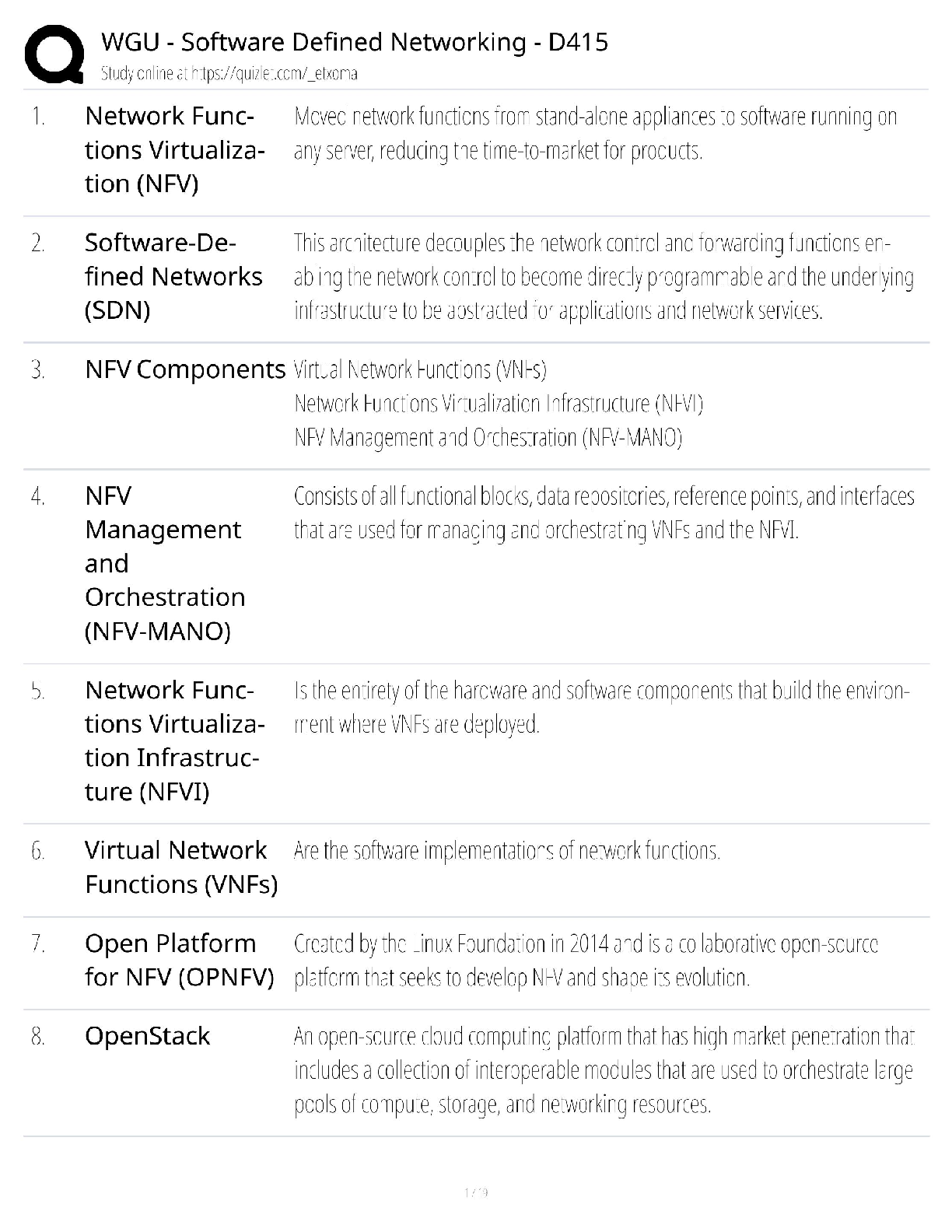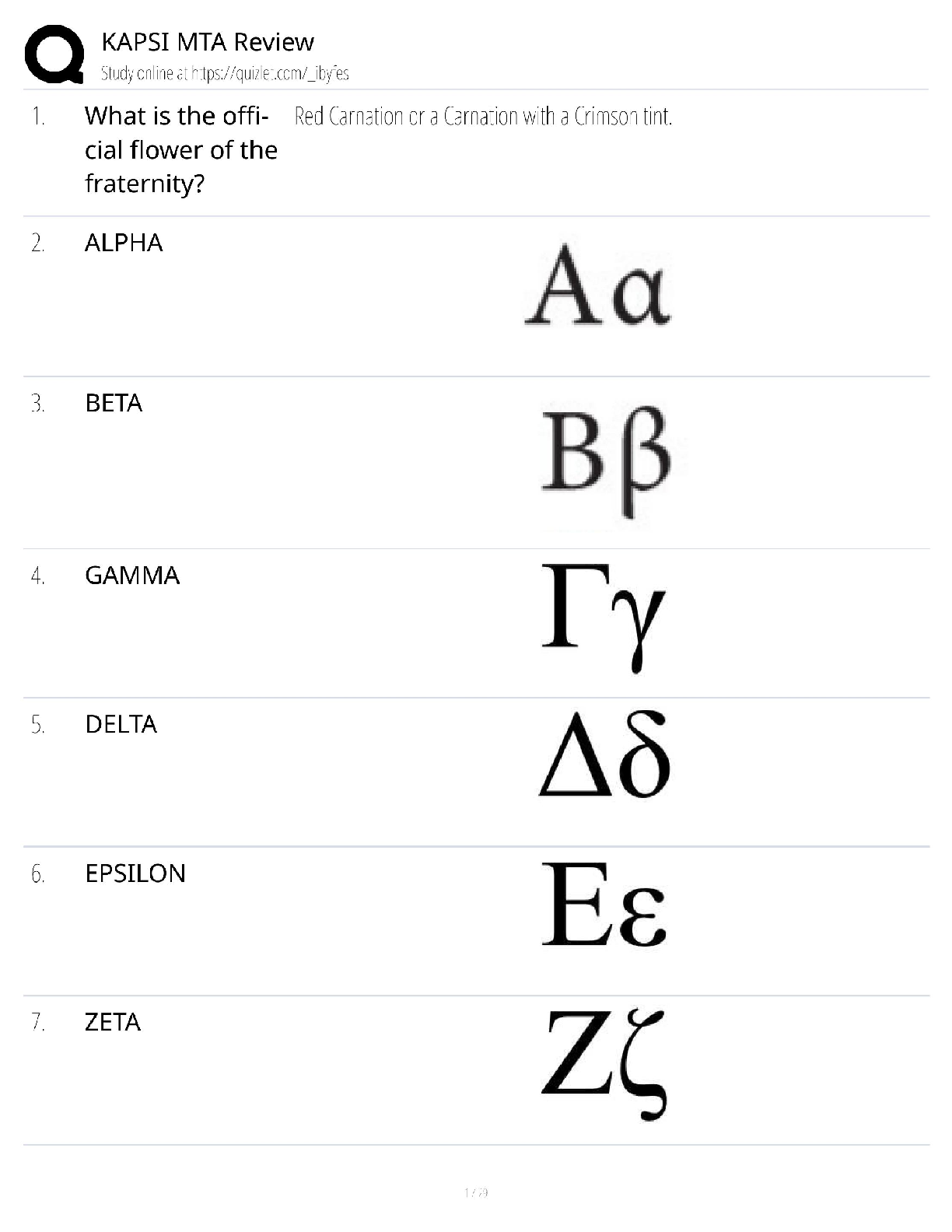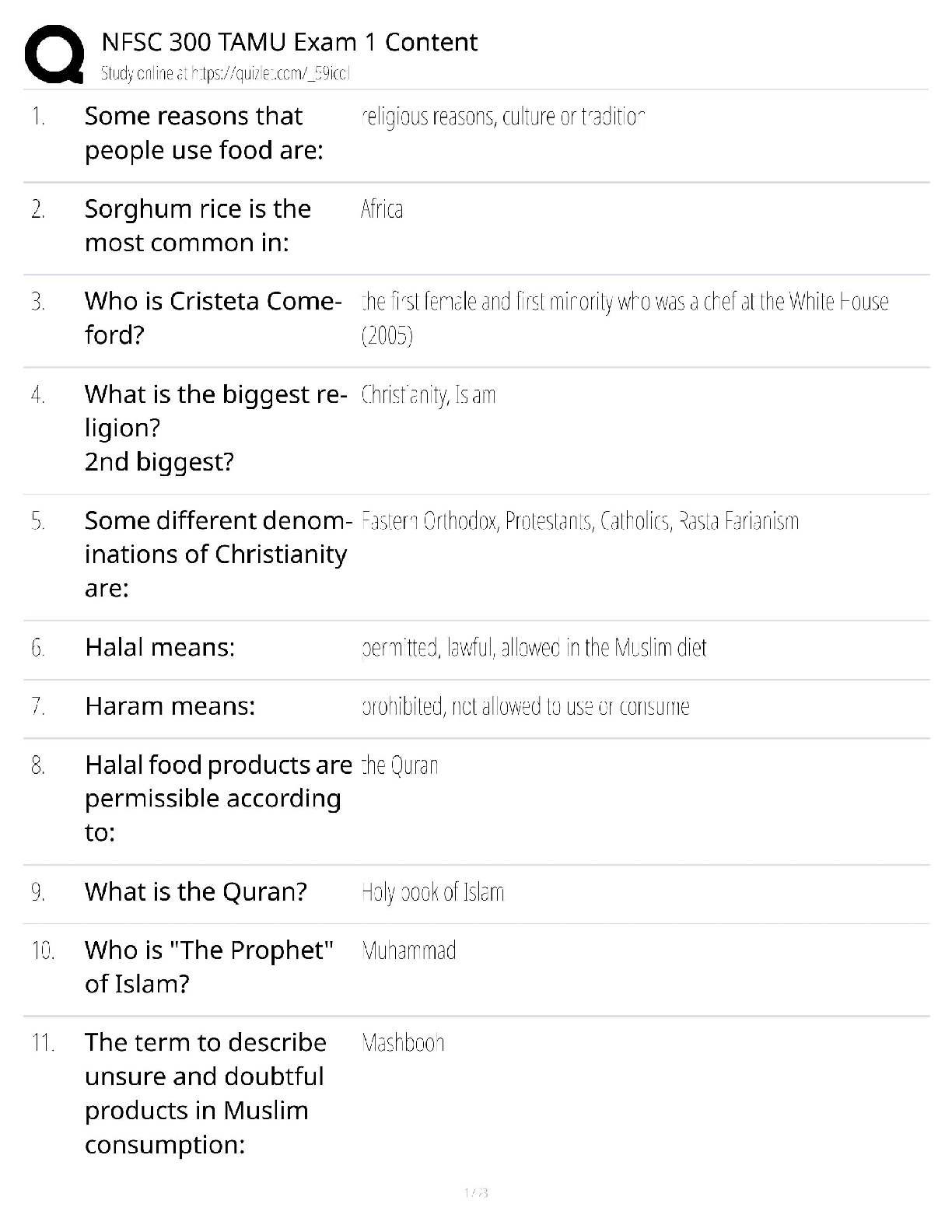Communication > QUESTIONS & ANSWERS > JMU SCOM Final Exam Study Guide (All)
JMU SCOM Final Exam Study Guide
Document Content and Description Below
JMU SCOM Final Exam Study Guide What are the most common myths about communication? - ✔✔1. Communication is a cure all 2. Communicating is just common sense 3. Communication quantity equals qu ... ality Name the three models of communication - ✔✔- Linear - Interactive - Transactional Explain the linear model of communication - ✔✔One way, sender sends a message through a channel to a receiver in an atmosphere of noise Explain the interactive model of communiction - ✔✔Back and forth; different from linear because it includes feedback and the different fields of experience of people Explain the transactional model of communication - ✔✔Everyone is a sender and a receiver Medium a message is sent through - ✔✔Channel Person sending the message - ✔✔Sender Person getting the message - ✔✔Receiver What the senders wants the receivers to get - ✔✔Message Putting ideas into spoken language - ✔✔Encode Translating the spoken ideas - ✔✔Decode A circumstance that forms a setting so an idea or statement can be easily understood - ✔✔Context Includes our cultural background, ethnicity, geographic location, extent of travel, and overall personal experiences - ✔✔Fields of experience Interference with the transmission and reception of a message - ✔✔Noise External, environmental distractions - ✔✔Physical Noise Biological influences (Ex: Sweaty palms) - ✔✔Physiological Noise Preconceptions, biases, and assumptions - ✔✔Psychological Noise Word choice that is confusing or distracting - ✔✔Semantic Noise The receiver's verbal and nonverbal response to the message - ✔✔Feedback What are the two aspects of every message? - ✔✔- Content - Relationship Explain the two aspects of every message - ✔✔- Content: What is actually being said or done - Relationship: How the message defines or redefines the association between individuals What are the Five Canons of Public Speaking? - ✔✔1. Invention 2. Arrangement 3. Style 4. Memory 5. Delivery What differentiates a constructive communication climate from a destructive communication climate? - ✔✔Constructive: openness and supportiveness Destructive: closed off and defensiveness Engaging in communication with others that is perceived to be both effective and appropriate in a given context - ✔✔Communication competence How does one achieve communication competence? - ✔✔1. Knowledge - Learn the rules 2. Skills - Show that you can communicate clearly, concisely, and confidently 3. Sensitivity - Develop receptive accuracy 4. Commit - Acquire a passion for excellence 5. Ethics - Determine the right and wrong of communication Describe the skills needed to be an effective and appropriate communicator - ✔✔- Progress towards the achievement of their goal - Know that even the best communicators make errors - Communication focuses on the "we" aspect instead of the "me" Explain the role of the rules in communication contexts - ✔✔Rules create expectations regarding appropriate behavior List 4 characteristics of an ethical communicator - ✔✔- Respectful - Honest - Fair - Responsible With large enough numbers almost anything is likely to happen to somebody - ✔✔Law of Very Large Numbers What are the three elements of the perceptual process? - ✔✔- Selecting - Organizing - Interpreting Explain the three elements of the perceptual process - ✔✔- Selecting: One must select a stimuli and focus on that one and block out all the others - Organizing: Organize the data you collect and create schemas - Interpreting: Make sense of the stimuli, or interpret the information collected and react to it What is the perceptual schema? - ✔✔Mental framework that creates meaningful patterns from stimuli The best example of something - ✔✔Prototype A generalization about a group or category of people - ✔✔Stereotype A predictable sequence of events that indicates what we are expected to do in a given situation - ✔✔Script Knowing ourselves and how we are different from all other individuals - ✔✔Self-concept Describe how self-concept is formed - ✔✔- By what others say about you - How you feel about yourself What are 7 of the influences on perception? - ✔✔- Gender - Culture - Past experiences - Mood - Context - Self-esteem - Bias Process of purposefully revealing to others personal information about yourself that is significant and others would not know unless you told them - ✔✔Self-disclosure The range of subjects that could be discussed between persons - ✔✔Breadth of SelfDisclosure How personal you become when discussing a particular subject - ✔✔Depth of SelfDisclosure What are the rules for self-disclosing and responding to self-disclosure - ✔✔1. Trust 2. Reciprocate 3. Understand that some cultures are not as open as others 4. Make sure appropriate for the situation 5. Do incremental disclosure to avoid an overload of information Why is reciprocal sharing important? - ✔✔You want to have the same trust and risk as the person sharing and also know that they are comfortable with you in sharing personal information Explain how our perceptions of others can influence our communication with them - ✔✔First impressions can be vulnerable to bias, but can also be very accurate The tendency to be more influenced by initial information about a person than by information gathered later - ✔✔Primacy Effect Adds to the primacy effect which can distort your view of others - ✔✔Negativity Bias The tendency to overemphasize personal traits and under emphasizing situations as causes of other people's behavior - ✔✔Attribution Error Acting on an inaccurate expectation that produces the expected behavior and confirms the original impression - ✔✔Self-Fulfilling Prophecy The tendency to attribute our successful behavior to ourselves, but to assign external circumstances to our unsuccessful behavior - ✔✔Self-Serving Bias Shared values, beliefs, and customs of a particular group of people - ✔✔Culture Explain how culture influences communication - ✔✔Different cultures that have a different set of values, beliefs, and practices all have things that mean something different The notion that one's own culture is superior to any other - ✔✔Ethnocentrism Views cultures as merely different, not deficient - ✔✔Cultural Relativism A social movement that promotes the value of diversity as a core principle and insists that all cultural group be treated with respect and as equals - ✔✔Multiculturalism Explain the major difference between low-context and high-context communication styles - ✔✔- Low-context: Straightforward and precise expression of point of view - High-context: Indirect, forces you to use context clues to figure out meaning in the message What were Hofstede's Dimensions of Distinguishing Culture? - ✔✔- Power Distance - Individualism vs. Collectivism - Masculinity vs. Femininity - Uncertainty Avoidance Explain Individualistic Culture - ✔✔- Huge emphasis on self - Motivated by personal achievement and initiative - Strongly favors individual preferences, goals, and needs Explain Collectivistic Culture - ✔✔- Focused on groups - Not "me" but "we" - Personal goals are downplayed in favor of the group Explain Low-Power Distance Cultures - ✔✔- Horizontal - Power is shared equally - Readily question authority - Doesn't favor classes or societ [Show More]
Last updated: 3 years ago
Preview 1 out of 15 pages

Buy this document to get the full access instantly
Instant Download Access after purchase
Buy NowInstant download
We Accept:

Reviews( 0 )
$10.00
Can't find what you want? Try our AI powered Search
Document information
Connected school, study & course
About the document
Uploaded On
Aug 28, 2022
Number of pages
15
Written in
All
Additional information
This document has been written for:
Uploaded
Aug 28, 2022
Downloads
0
Views
133


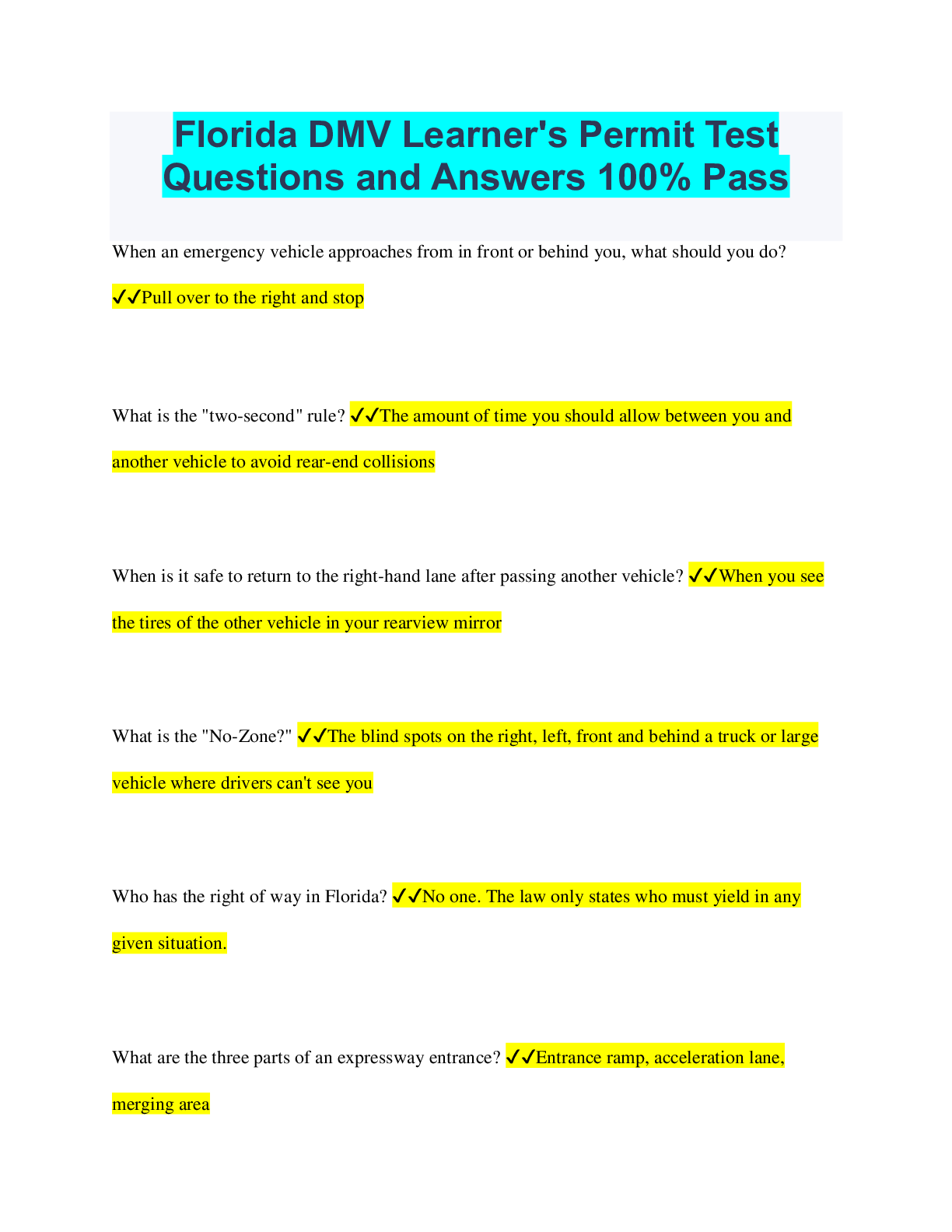
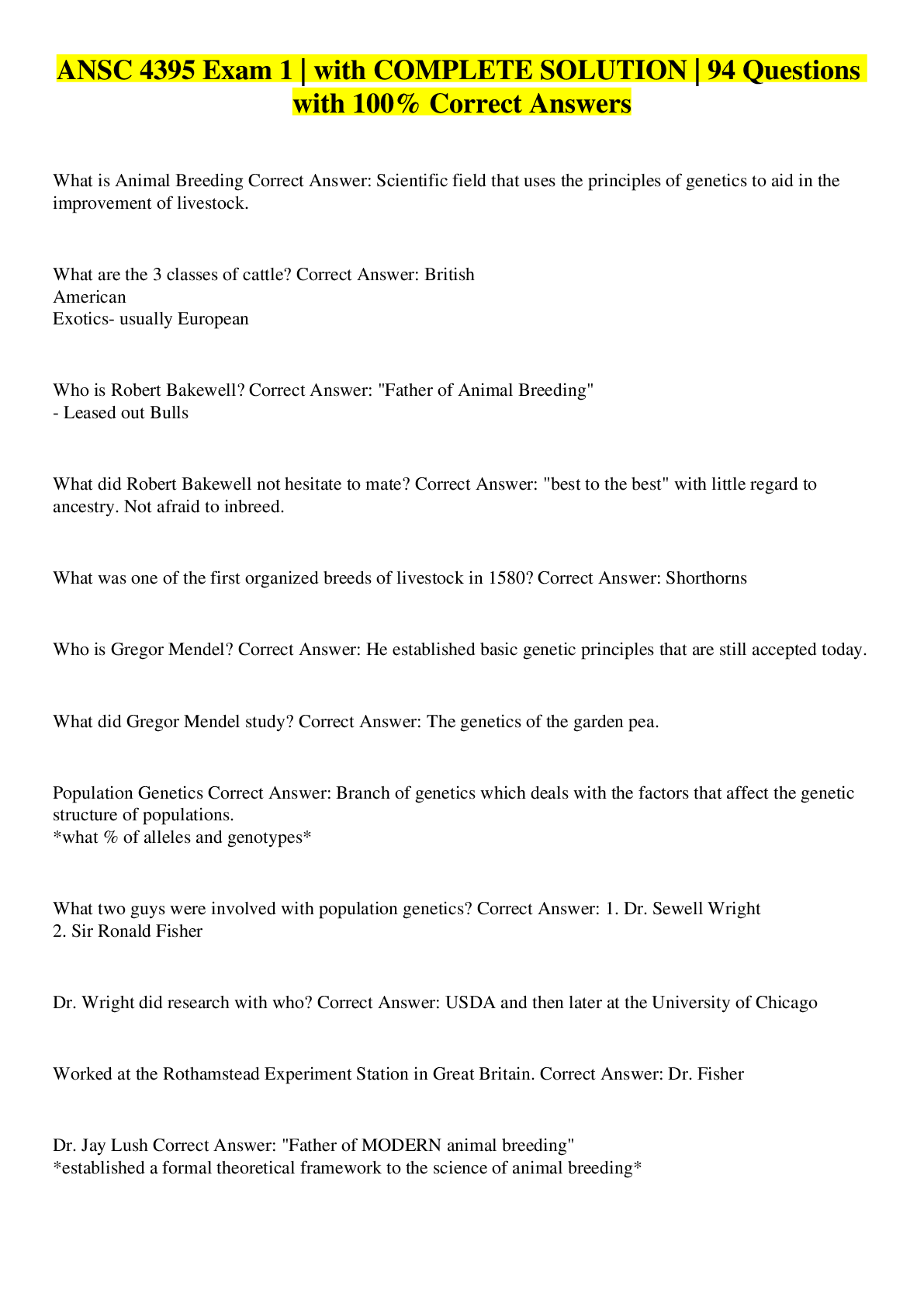

.png)








